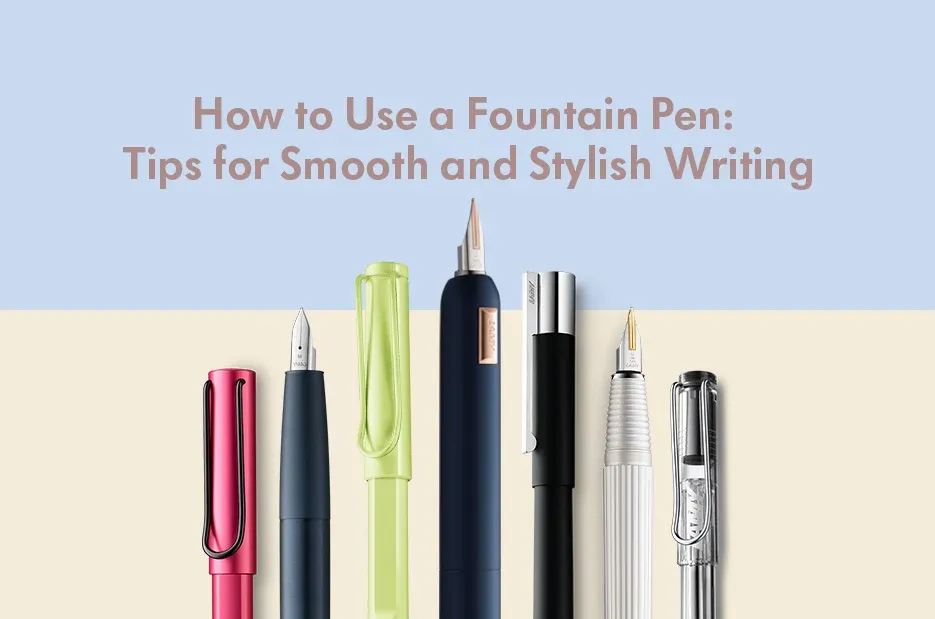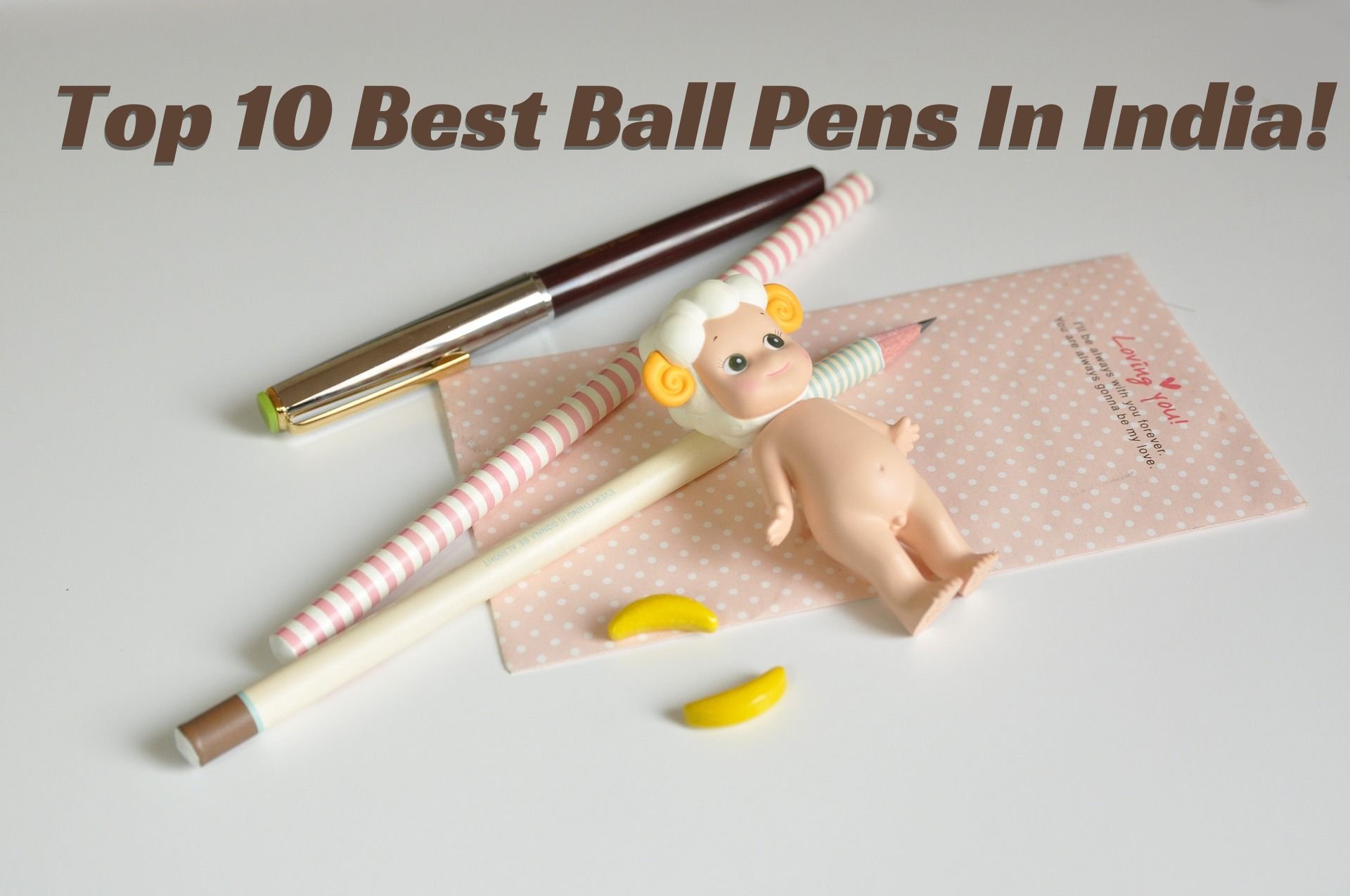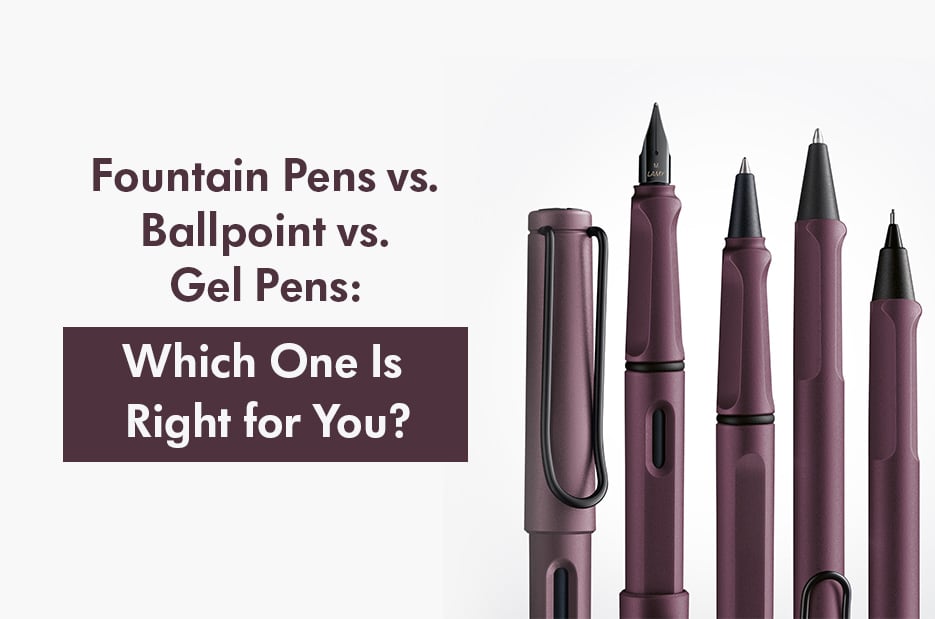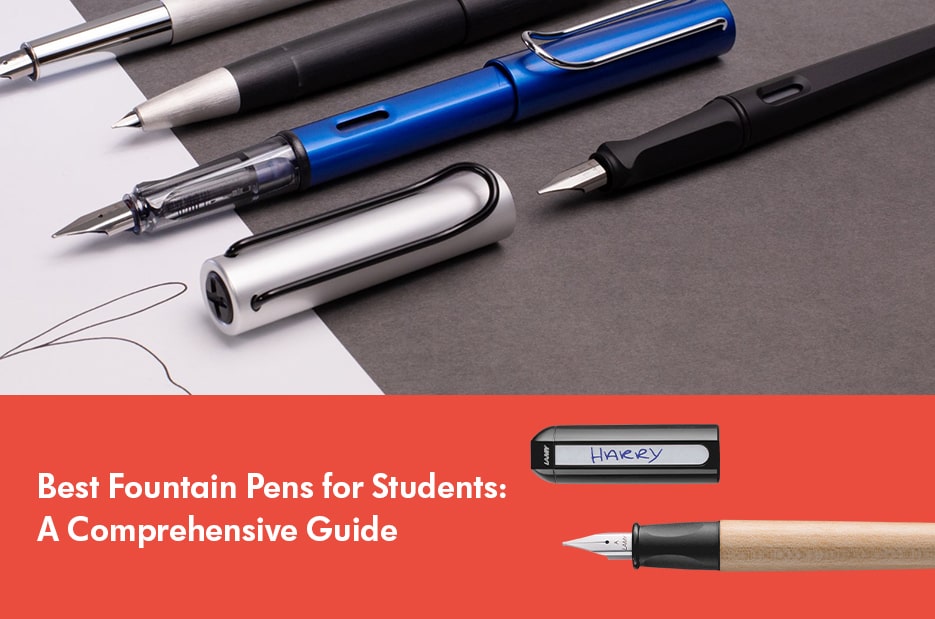How to Use a Fountain Pen: Tips for Smooth, Stylish Writing

Rediscover the Art of Writing with a Fountain Pen
Are you rediscovering the charm of how to use a fountain pen? Or, is it your first time picking up a nib?
The experience of knowing how to write with a fountain pen is incredibly timeless. It’s in the way the ink flows, the subtle scratch of nib on paper, and the smooth glide of your pen on paper.
However, not everyone can immediately be an expert on how to write with a fountain pen.
This guide will walk you through everything that you need to know when you’re learning how to use a fountain pen.

What Is a Fountain Pen? Key Features and Benefits
So, what is a fountain pen? Is it the same as other pens?
The working mechanism of a fountain pen differs from that of other writing tools. This writing instrument uses water-based liquid, which is drawn from a cartridge or converter. The ink gets delivered through a nib.
While ballpoint pens rely on pressure to produce results, fountain pens require minimal pressure. Instead of manual pressure, this writing tool makes use of gravity and capillary action to drive the ink from the barrel to the paper surface.
Then, what is a fountain pen used for?
Fountain pens have mostly been used for writing letters and journaling. However, due to their popularity and high accessibility, they can also be used for daily writing now. At the same time, their classy writing can also be utilised for calligraphy.
Check Out: 10 Best Fountain Pens in India
Understanding the Parts of a Fountain Pen and How It Works
However, if you're switching to a fountain pen from your regular writing instrument, you need to get acquainted with all its parts and components!
1: Nib
This is the metal tip of the fountain pen that touches the paper. It produces ink and allows your thoughts to find a permanent place.
The nibs of fountain pens can be of various different sizes and materials. They can be fine, broad, or medium. They can also be made from precious metals.
2: Feed
As we move along the pen, we come across the feed, which is just below the nib. This is the section that regulates the flow of ink from the pen.
You have to wrap your fingers around this part and apply minimal pressure for the ink to flow.
3: Cartridge/Converter
Finally, we arrive at the ink reservoir. Cartridges are pre-filled and disposable. On the other hand, converters allow you to refill ink from a bottle.
Many people get stuck at: how to put ink in a fountain pen?
It's super easy, and it completely depends on the filling system. In the case of a cartridge, you simply need to push it into its place until you hear a click. On the other hand, for a converter, you need to fill ink into it from a bottle.
Also Read: Best Fountain Pens for Students: A Comprehensive Guide
How to Use a Fountain Pen: Step-by-Step Instructions for Beginners & Pros
Now it's time for us to learn how to use ink pen!
- First, we must figure out how to hold a fountain pen. Our fingers should always grip the pen 1-1.5 inches away from the nib.
- Most importantly, don't grip the pen too tightly. This may lead to blotting or fatigue. Relax your fingers and apply minimal pressure.
- The pen should always be held at an angle of 40-55°. If you hold it too straight or too flat, your ink flow will be disrupted.
- You should always keep your posture correct while writing with a fountain pen. Your back must be straight, and your elbow should have a steady support.
- Finally, you can start with simple doodling to learn how to write with a fountain pen. If you're consistent with your writing practice, soon you'll be able to use a fountain pen on a regular basis.
Also Read: Beginner Fountain Pen Mistakes to Avoid
Fountain Pen Writing Styles to Explore
So, are you an expert at writing with a fountain pen now? Here are some fountain pen writing styles that you can explore:
1: Cursive Writing
This writing style is extremely elegant and graceful. Additionally, it’s excellent practice for speed writing!
2: Calligraphy
This art of writing is highly appreciated and admired. However, you will need flex nibs or italic nibs for this.
3: Bullet Journaling
This type of journaling allows you to express your thoughts and emotions in words as well as images. Hence, bullet journaling combines the practice of writing and sketching.
4: Daily Journaling
Nothing beats journaling every day. It’s liberating, therapeutic, and eye-opening, especially when you do it with a fountain pen.
Fountain Pen Maintenance and Care Tips: Easy Cleaning & Storage Tips
If you want your fountain pen to remain fully functional and keep giving you the best results, you must cherish and maintain it.
- It is highly recommended to clean your fountain pen regularly. You must rinse the nib and feed every few weeks.
- Never store your fountain pen with the nib facing downwards. This can lead to blotting, leakage, or clogging.
- You should always make sure to clean your nib before dipping it into the ink bottle. All you need to do is gently wipe the nib with a clean cloth.
Related Post: Do’s and Don’ts of Fountain Pen Care and Maintenance
Choosing the Best Fountain Pen for Writing: Top Picks for Beginners & Pros
We have a couple of recommendations for the best fountain pens for writing:
1: LAMY safari
This model is a classic and a favourite. Its lightweight body, ergonomic grip, and durable design make it perfect for beginners.
2: Pilot Metropolitan
This is a favourite among students as well as professionals! It features a metal body and a smooth nib that offers an excellent writing experience.
3: LAMY Al-star
The aluminium body of this fountain pen makes it sturdy, classy, and modern. So, if you’re expecting a magnificent writing experience, this pen promises to deliver.
Related Post: How to Choose a Fountain Pen?
Final Thoughts: Writing with a Fountain Pen Is More Than Just Ink on Paper
Thus, it's not just about learning how to write with a fountain pen. It's also about maintaining, cherishing, and owning the writing instrument.
You're not just putting words on paper. Rather, you're slowing down, creating something personal, and making the most of this experience.
So, once you learn how to use a fountain pen, you must practice taking care of it.
Discover the perfect balance of design and performance with LAMY fountain pens. Even if you're new or just rediscovering your passion for writing, a LAMY is waiting to be your forever companion.
Recommended: Top Reasons to Start Using a Fountain Pen
Fountain Pen FAQs: Common Questions Answered for Beginners
Q1: How do I start writing with a fountain pen if I'm left-handed?
Ans: Left-handers can write with fountain pens, too! You can use quick-drying ink and try an oblique or left-handed nib. However, you must practice with paper that minimises smudging.
Q2: Why is my fountain pen skipping or scratching?
Ans: Skipping often means the ink flow is inconsistent. Hence, you should try cleaning the nib. It can also be because you're writing at the wrong angle or using textured paper.
Q3: How often should I clean my fountain pen?
Ans: If you write daily, you should clean your pen once in every 2-3 weeks. Moreover, you should definitely clean it before switching ink colours or if you notice flow issues.
Q4: What ink is best for beginners?
Ans: It's best to go for water-based, dye inks (not pigmented). LAMY, Pelikan 4001, and Pilot inks are completely beginner-friendly and safe for most pens!
Q5: Can I use regular paper for fountain pens?
Ans: Yes, you can. However, you may experience feathering or bleed-through. Hence, it's recommended to get fountain pen-friendly paper for the best writing experience.















Comments